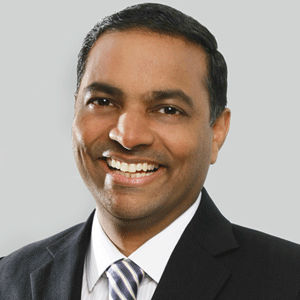THANK YOU FOR SUBSCRIBING

Why the Digitization of Healthcare is an Unavoidable Imperative
Tirupathi Karthik, Chief Executive Officer, Napier Healthcare Solutions


Tirupathi Karthik, Chief Executive Officer, Napier Healthcare Solutions
In a recent article, I wrote about the problem of the healthcare industry in India being relatively miserly where investment in IT is concerned. Sadly, this problem is not unique to the Indian healthcare sector. I am convinced that this is a sector-specific ‘malaise’ rather than a geography-specific one.
On the face of it, growth figures in annual IT spend by the healthcare sector seem very impressive and show encouraging signs that things are headed in the right direction. However, look a little deeper and you realize that the level of IT investments by healthcare providers are not nearly enough to realize the full transformational potential of IT for the sector.
Consider the US healthcare sector. The US devotes anywhere between 16 and 20 percent of its GDP every year to healthcare, making it one of the biggest spenders on healthcare in the world.Yet it shows poorer outcomes in its citizens’ actual health overall in comparison with many of the advanced economies they surpass in healthcare expenditure.
I can’t help but ask if greater and more prudent investment in IT–more specifically on electronic health records, analytical systems and interoperability solutions–couldn’t better address this issue, which primarily stems from problems associated with the operational, resource management and coordination aspects of healthcare delivery in the country.

At present, according to market research firm Gartner, US healthcare IT spend will soon reach about US$40 billion. Compare that to Malaysia’s US$126 million and the Philippines’ US$75 million (according to another research firm, IDC), and it sounds like a lot. But if you do the math and realize that it accounts for a little more than 2 percent of the US GDP for 2014—the US$40 billion figure is diminutive. It is a paltry sum to devote to making your national healthcare system work for a population of 320 million!

Healthcare has to just look at some other large industries to see the business case for investing in IT. The retail sector was due to spend about US$190 billion on IT globally in 2015, while the financial services sector was expected to dole out about US$461 billion (admittedly, this includes hardware, software and related services). Obviously these industries have recognized the potential and even the indispensability of IT for their businesses. Why then is the healthcare sector not fully awake to the possibilities?
Digitization is the present and the future
The reasons may liepartly in the five myths that McKinsey consultants Stefan Biesdorf and Florian Niedermann highlight in an article published a couple of years ago (Healthcare’s Digital Future, July 2014). The biggest myths that the authors dispel in their article are that patients don’t want to use digital technologies for healthcare or that these are only used by youngsters.
Using data from different countries, the authors show the mismatch between what the healthcare industry perceives as expectations and what patients actually want. Healthcare providers don’t need to be paralyzed by worries of huge expectations from users. They need to take the important step of getting started, staying committed and then enhancing the patient experience with added features and functionality.
While I believe that getting started on the digital route may not be as much of a problem now than it was a few years ago, there is certainly some reluctance and, dare I say, resistance to be fully committed to the IT transformation.
Benefits far outweigh the costs
To think that embarking on the digitization journey or using more IT alone will solve all of healthcare’s problems would be naïve. There will be people, process and technology challenges as one moves forward with IT-driven healthcare delivery.An example, are hospitals doing enough for their future? Napier’s view (consequently our product strategy) is that the Acute Care sector will be called to do a lot more and will have to significantly enhance its community outreach and project services well beyond its four walls. That is an area ripe for investment in technology as it can and should be designed to be technology centric from day one. Holistic case management of Chronic Illnesses’ and Smart Health technologies need to be in place. A recent study by DesignSingapore Council has showed that our seniors are quite savvy with WhatsApp, Viber and Skype. Why not integrate those in our process flow and deliver a great Patient Experience?
I’d like to conclude by pointing to a recent piece by Rebecca George, the Vice Chair and Public Sector Health Lead of Deloitte UK where she makes a strong case for IT transforming the National Health Service (Can IT transformation deliver a cost-effective 21st Century healthcare service? February 19, 2016). As she says:“Done correctly, digital services can ensure…world-leading universal care, overcoming financial challenges, supporting advances in research and improving patient outcomes. There are inevitably risks…but the reward is a cost-effective, 21stCentury healthcare service.”












